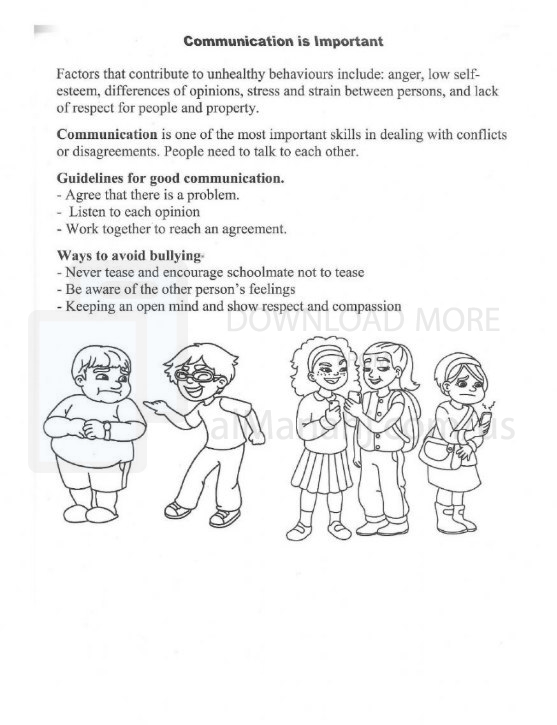| You are here: Almanahj Website ⇒ American curriculum ⇒ 3rd Grade ⇒ Information and comm ⇒ Term 1 | ||
|---|---|---|
Worksheet About How to Communicate with others | ||
|---|---|---|
| Subject: Information and comm | ||
| 3rd Grade | ||
| Term 1 | ||
| Year: 2023/2024 | ||
| Size: 261.4KB | ||
| Number of clicks: 79 | ||
| Publish date:November 13, 2023 | ||
| Added by: Eman | ||
| Last download date: 2024-09-12 19:45:26 | ||
| Updated by: Eman9966 on 2023-11-13 19:00:04 | By: theodor Kaylahpinder | |
| File info: Effective communication is a crucial skill that allows us to connect with others, share information, and build relationships. It is essential in both personal and professional settings, and it can significantly impact our success and well-being. Here are some key principles of effective communication: Clarity and Conciseness: Express your thoughts clearly and concisely, using appropriate language and avoiding jargon or overly complex sentences. Aim to convey your message in a straightforward manner that is easy for the listener to understand. Active Listening: Active listening involves paying full attention to the speaker, both verbally and nonverbally. This means avoiding distractions, maintaining eye contact, and showing genuine interest in what they have to say. Active listening helps you to fully grasp the speaker's message and respond thoughtfully. Empathy and Understanding: Effective communication involves putting yourself in the listener's shoes and trying to understand their perspective. Empathy allows you to connect with the speaker on an emotional level and respond with sensitivity and respect. Nonverbal Cues: Nonverbal communication, including body language, facial expressions, and tone of voice, plays a significant role in conveying meaning. Ensure your nonverbal cues align with your verbal message to avoid sending mixed signals or creating misunderstandings. Appropriate Channel Selection: Choose the most appropriate channel of communication for the situation. Consider the nature of the message, the relationship with the recipient, and the desired outcome. Face-to-face communication is often best for sensitive or complex matters, while written communication is suitable for formal or lengthy messages. Feedback and Clarification: Encourage feedback from the listener to ensure that your message has been understood correctly. Ask questions, paraphrase their statements, and seek clarification if necessary. This two-way communication loop helps to prevent misunderstandings and ensure that the message is accurately conveyed. Respectful Communication: Maintain a respectful tone throughout the conversation, even if you disagree with the speaker's viewpoint. Avoid personal attacks, interruptions, or dismissive language. Instead, focus on expressing your opinions constructively and engaging in a productive dialogue. Cultural Sensitivity: Be mindful of cultural differences when communicating with others. Adapt your communication style to respect the listener's cultural norms and avoid making assumptions based on their background. Emotional Intelligence: Emotional intelligence, or EQ, is the ability to understand, manage, and express emotions effectively. It is crucial for effective communication, as it allows you to respond to others with empathy, navigate difficult conversations, and build rapport. Continuous Improvement: Effective communication is a lifelong learning process. Seek opportunities to practice and refine your communication skills in various settings. Observe how effective communicators interact, read books or articles on communication techniques, and take courses or workshops to enhance your skills. By incorporating these principles into your interactions with others, you can enhance your communication effectiveness, strengthen relationships, and achieve your personal and professional goals. Effective communication is a powerful tool that can transform your interactions and open up new possibilities. | ||
| Downloading link Worksheet About How to Communicate with others |
|---|
|
1699861177.pdf
The file is being prepared for download
|
| File images |
|---|
 |